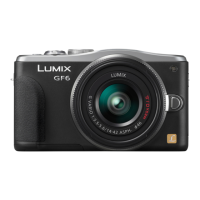
Do you have a question about the Panasonic Lumix DMC-GF6 and is the answer not in the manual?
| Megapixel | 16 MP |
|---|---|
| Camera type | Compact camera |
| Sensor type | Live MOS |
| Image stabilizer | Yes |
| Total megapixels | 16.68 MP |
| Image sensor size | 4/3 \ |
| Image formats supported | JPEG XR, MPO, RAW |
| Supported aspect ratios | 1:1, 3:2, 4:3, 16:9 |
| Maximum image resolution | 4608 x 3456 pixels |
| Image stabilizer location | Lens |
| Still image resolution(s) | 4608x3456, 3264x2448, 2336x1752, 1824x1368, 4608x3072, 3264x2176, 2336x1560, 1824x1216, \\r 4608x2592, 3264x1840, 1920x1080, 1824x1024, 3456x3456, 2448x2448, 1744x1744, 1712x1712 |
| Filter size | 46 mm |
| Digital zoom | 4 x |
| Optical zoom | 2 x |
| Focal length range | 14 - 42 mm |
| Lens mount interface | Micro Four Thirds (MFT) |
| Maximum aperture number | 22 |
| Minimum aperture number | 3.5 |
| Number of diaphragm blades | 7 |
| Number of aspheric elements | 2 |
| Lens structure (elements/groups) | 9/8 |
| Maximum focal length (35mm film equiv) | 84 mm |
| Minimum focal length (35mm film equiv) | 28 mm |
| Focus | TTL |
| Focus adjustment | Auto/Manual |
| Auto focusing (AF) modes | Spot Auto Focus, Tracking Auto Focus |
| Auto Focus (AF) points selection | Auto, Manual |
| Light metering | Centre-weighted, Evaluative (Multi-pattern), Spot |
| ISO sensitivity | 160, 200, 400, 800, 1600, 3200, 6400, 12800, 25600, Auto |
| Light exposure modes | Aperture priority AE, Auto, Manual, Shutter priority AE |
| ISO sensitivity (max) | 25600 |
| ISO sensitivity (min) | 160 |
| Light exposure control | Program AE |
| Light exposure correction | ± 3EV (1/3EV step) |
| Fastest camera shutter speed | 1/4000 s |
| Slowest camera shutter speed | 60 s |
| Flash modes | Auto, Forced off, Forced on, Red-eye reduction, Slow synchronization |
| Flash sync-speed | 0.00625 s |
| Flash guide number | 6.3 m |
| Power source type | Battery |
| Video resolutions | 640 x 480, 1280 x 720, 1920 x 1080 pixels |
| Video formats supported | AVCHD, MP4 |
| Maximum video resolution | 1920 x 1080 pixels |
| Analog signal format system | NTSC, PAL |
| Resolution at capture speed | 1280x720@25fps, 1280x720@50fps, 1920x1080@25fps, 1920x1080@50fps, 640x480@25fps |
| Audio system | stereo |
| Audio formats supported | AAC |
| Internal memory | - MB |
| Compatible memory cards | SD, SDHC, SDXC |
| Field of view | 100 % |
| Display diagonal | 3 \ |
| Display aspect ratio | 3:2 |
| Display resolution (numeric) | 1040000 pixels |
| PictBridge | - |
| USB version | 2.0 |
| HDMI version | 1.3c |
| HDMI connector type | Mini |
| Wi-Fi standards | 802.11b, 802.11g, Wi-Fi 4 (802.11n) |
| Scene modes | Children, Night, Portrait, Sunset, Landscape (scenery) |
| Photo effects | Skin tones, Solarisation |
| White balance | Auto, Cloudy, Custom modes, Daylight, Flash, Incandescent, Shade |
| Shooting modes | Aperture priority, Manual, Program, Scene, Shutter priority |
| Self-timer delay | 2, 10 s |
| Camera file system | DCF, Exif 2.3 |
| Battery voltage | 7.2 V |
| Battery capacity | 1025 mAh |
| Product color | Brown |
| Operating temperature (T-T) | 0 - 40 °C |
| Operating relative humidity (H-H) | 10 - 80 % |
| Cables included | USB |
| Depth | 38.4 mm |
|---|---|
| Width | 111.2 mm |
| Height | 64.8 mm |
| Weight | 281 g |
| Lens length | 49 mm |
| Lens weight | 110 g |
| Lens diameter | 56 mm |
| Weight (including battery) | 323 g |
Guidelines for maintaining and protecting the camera from damage and environmental factors.
List of items included with the camera and how to identify them.
Detailed identification and explanation of camera body parts and buttons.
Information about compatible lens types and their mount specifications.
Step-by-step instructions for attaching and detaching camera lenses.
Instructions for securely attaching the camera's shoulder strap to prevent drops.
Steps for charging the camera battery and information about battery indicators.
Procedures for safely inserting and removing memory cards and batteries.
Guide to setting the camera's date, time, and display formats.
Overview of menu operations and customization options for camera settings.
How to access and use the Quick Menu for fast settings adjustments.
Guide to customizing camera buttons for quick access to frequently used functions.
Fundamental advice on holding the camera and maintaining stability for better photos.
Step-by-step guide on how to capture still photographs using the camera.
Instructions on starting and stopping the recording of motion pictures.
Procedures for playing back recorded still pictures and motion pictures.
Steps for deleting unwanted pictures from the camera.
How to select different shooting modes using the mode dial and iA button.
How to use Intelligent Auto Mode for automatic camera settings.
How to use Program AE Mode for greater creative control over settings.
Explains Aperture-Priority AE and Shutter-Priority AE modes for manual control.
Instructions for capturing panoramic images by moving the camera.
Utilizing Scene Guide Mode to automatically optimize settings for various scenes.
Applying various creative image effects and filters to photos.
Saving and recalling custom camera settings for quick access.
Information on activating and using the camera's image stabilization system.
Instructions on opening, closing, and using the built-in flash.
Adjusting exposure settings to achieve correct brightness in challenging lighting.
Adjusting ISO sensitivity for optimal performance in various lighting conditions.
Setting white balance to accurately capture colors under different light sources.
Selecting appropriate autofocus methods based on subject position and movement.
Guide to using manual focus via focus lever or ring for precise control.
Locking focus and exposure for subjects outside the AF area or with high contrast.
Choosing drive modes like single shot, burst, auto bracket, and self-timer.
Capturing sequences of shots continuously by holding the shutter button.
Capturing multiple shots with varying exposure settings automatically.
Using the self-timer for delayed shooting to avoid camera shake.
Overview of settings available in the [Rec] menu for picture adjustments.
Combining multiple exposures into a single image for rich gradation.
Creating stop motion videos by splicing recorded pictures.
Instructions on starting and stopping the recording of motion pictures.
Capturing still images simultaneously while recording motion pictures.
Manually setting aperture and shutter speed for motion picture recording.
Reducing operational sounds during motion picture recording using touch icons.
Overview of settings available in the [Motion Picture] menu.
Utilizing Extra Tele Conversion for enhanced zoom in motion pictures.
Enabling silent operation for recording motion pictures.
Overview of various playback functions like editing, protection, and print settings.
Erasing unwanted parts from recorded pictures.
Adding text comments to recorded pictures.
Stamping recording date, time, name, or title onto recorded pictures.
Splitting recorded motion pictures into two parts.
Reducing the image size (number of pixels) for web posting or email.
Clipping important parts of recorded images.
Rotating pictures manually or automatically displaying them vertically.
Marking and managing favorite pictures for slide shows or playback.
Setting images for printing and specifying the number of copies.
Setting protection for pictures to prevent accidental deletion.
Setting the default confirmation option for picture deletion.
Introduction to the camera's wireless LAN and NFC capabilities.
Remotely operating the camera using a smartphone or tablet.
Steps to install the required application on your smartphone or tablet.
Establishing a connection between the camera and a smartphone/tablet.
Capturing images remotely using a smartphone or tablet.
Transferring images from the camera to a smartphone or tablet.
Remotely controlling the camera to send images to a smartphone/tablet.
Displaying camera images on a DLNA-compatible TV.
Instructions for wirelessly sending images to a compatible printer.
Transferring pictures and motion pictures from the camera to a PC.
Sending images to SNS or cloud services via “LUMIX CLUB”.
Acquiring a login ID for LUMIX CLUB for image synchronization and web service transfer.
Selecting connection methods for Wi-Fi, including network and direct connections.
Methods for connecting to a wireless access point via WPS or manual connection.
Instructions for taking and viewing 3D pictures using a 3D interchangeable lens.
Connecting the camera to a TV for playback using HDMI or AV cables.
Utilizing VIERA Link for integrated TV and camera operations via HDMI.
Acquiring recorded pictures from the camera to a PC.
Information about the software included on the CD-ROM for PC management.
Copying images from the camera to a PC using the USB connection cable.
Connecting the camera to a PictBridge printer for direct printing.
Overview of optional accessories like AC adapters, DC couplers, conversion lenses, and filters.
Explanation of the icons and information displayed on the camera's monitor screen.
A comprehensive list of all menus and their corresponding page numbers.
Solutions for common problems encountered with the camera's operation.
Information regarding battery operation, charging, and disposal.
Important safety precautions and guidelines for optimal camera usage.
Instructions for cleaning the camera body and image sensor.
Information and precautions related to 3D recording and viewing.
Important notices regarding memory card handling, data transfer, and personal information.
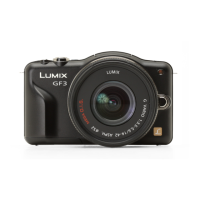
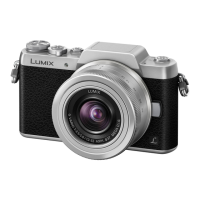
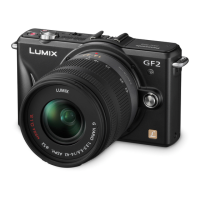
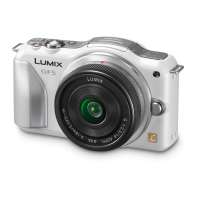
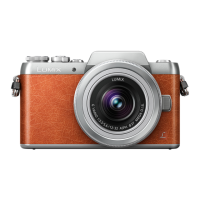

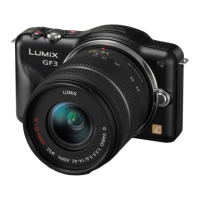
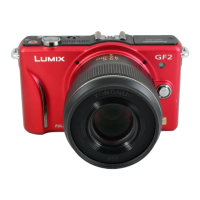
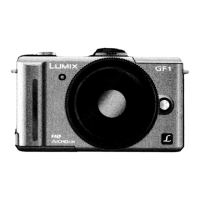
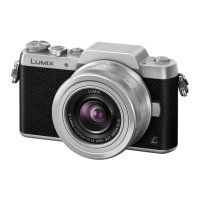
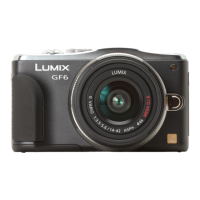
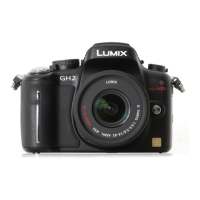
